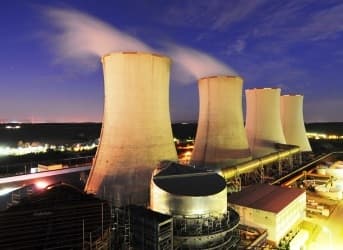The Japanese nuclear disaster of 11 March 2011 occurred when an offshore earthquake, which measured 9.0 on the Richter scale, was followed by a tsunami that effectively destroyed Tokyo Electric Power Co.’s six reactor Fukushima Daiichi nuclear power plant (NPP).
Since then, the global community using NPPs has been arguing about the significance of the event, whether the havoc wrought on Fukushima was a harbinger of things to come or rather, an isolated, freak incident. As nations have over the last 40 years invested trillions of dollars in nuclear energy, the stakes are high, with proponents arguing that Fukushima was a freak accident, while anti-nuclear proponents argue that the disaster that destroyed Fukushima was indeed a freak of nature that no one could have foreseen.
Advocates of nuclear power rightly insist that NPPs generate nearly zero gas emissions, an object of no minor concern to a world increasingly preoccupied with the issues of greenhouse gas emissions and global warming.
Opponents argue with equal vehemence that NPPs are nevertheless vulnerable to a number of potentially catastrophic events beyond damage inflicted by Mother Nature, in the form of human error, which caused the 1979 partial meltdown at the U.S. NPP at Three Mile Island, which the U.S. Nuclear Commission labeled, “the most serious in U.S. commercial nuclear power plant operating history, even though it led to no deaths or injuries to plant workers or members of the nearby community.”
Five years later, the USSR’s Ukrainian Chernobyl NPP exploded, resulting in one of only two classified as a level 7 event on the International Nuclear Event Scale, the other being the 11 March 2011 Fukushima Daiichi nuclear incident.
Why is this history relevant?
Because South Koreans are learning that their government, in a pro-nuclear country bereft of fossil fuel energy imports, is investigating forged safety documents for parts used in NPPs and design flaws in the country’s reactors, both examples of human error, which can put the country’s NPPs at increased risk from equipment failure.
How serious are things in the Land of the Morning Calm?
Related Article: Iran's Nuclear Plant Entering Final Stages?
On 9 November, after microscopic cracks were found in six tunnels that guide control rods to regulate the fission chain reaction in the reactor’s core were discovered in a 1,000 megawatt reactor at the Yonggwang NPP, two of the country’s 23 NPPS were shut down. This was the first time since South Korea started operating NPPs that cracks had been discovered on key components and not basic components, and experts warned that if the NPP had continued to run with the cracks, it could have led to an explosion of the reactor in a worst case scenario.
Worse was to follow.
Last month South Korea’s Ministry of Knowledge Economy announced in the aftermath of the Yonggwang NPP shutdown that a survey had determined that South Korea’s 23 NPPs contained 230 substandard components, after determining that the supply of substandard parts to Korea Hydro & Nuclear Power Co., the state-run operator of the nation’s NPPS, had been going on since 2003.
There is a lot at stake for South Korea, as Seoul intends to build another six NPPs by 2024 so as to lessen its dependence on imported oil, coal and liquefied natural gas. Additionally, South Korea intends to export 80 NPPs by 2030 in contracts worth up to $300 billion.
South Korea’s 23 reactors supply roughly 35 percent of its electricity needs, roughly on a level with Japan’s nuclear industry before Fukushima. To bring them all offline would impose significant hardship on both the country’s export driven industries and the populace.
ADVERTISEMENT
But the issues of substandard parts and NPP flaws is not one that the South Korean government can avoid, especially given both its population’s concerns in the aftermath of the nuclear catastrophe in neighboring Japan and its desire to export nuclear technology.
Painful as it might be, the sooner the South Korean government fully and transparently addresses the issues concerning its nuclear power industry, the better.
By. John C.K. Daly of Oilprice.com


















